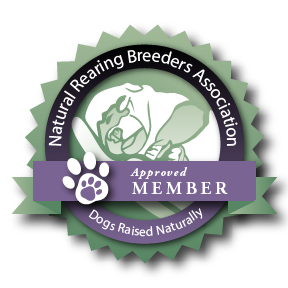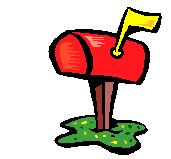1- Note to Readers
The following information is supplied on the understanding that it is not designed to take the place of your veterinarian. Diagnosis of a medical or surgical condition in your dog can only be carried out by a veterinary surgeon. The author of this book cannot be responsible for any decisions any reader may make with regard to feeding or treating their dog(s). Any application of the recommendations set forth in the following pages is at the reader’s discretion and sole risk. It is strongly advised that the reader at all times seeks out the best veterinary resources available, in order that informed decisions on the care of dogs is obtained at all times.
2 -Acknowledgements –
Thanks are due to many people, and many dogs, who have directly and indirectly contributed to this book. At the very least, they include the following.
The dogs that have shared their lives with me, starting with Candy my first-ever dog. She set me on the right track as regards the food requirements of healthy dogs. After candy came Trixie, Sandy, Elizabeth, Dusty, Panda, Killa, Thunda, Molly, George, Teagan, Boris, Jaffa, Foxie, Scaredy Cat, Ruby, Dusty, Ben, Mouse, Bonnie, Yootha, Poodle and Rupert.
The many other dogs who have stayed and walked and run and eaten with us for part of their lives, before moving on to their new owners. Every one of those dogs has made its own unique contribution to our nutritional knowledge.
My client’s dogs and my clients. They too have taught me much. From becoming acquainted with the feeding habits of my client’s dogs, I have been able to observe and discover the fascinating relationship between diet, health and disease.
All those clients who have had sufficient faith in my ideas to try them with their own dogs. Their names would fill this book, so I shall be fair to all and single out none – with one exception. Thank you Clarissa Starrenburgh. Your early support and enthusiasm did much to keep me pushing forward and learning about nutrition, and better ways to feed dogs.
My clients in Lithgow for their ready acceptance of me and my ideas, and also for having cheerfully tolerated my many absences whilst this book was being completed.
Les Hart, without whom this book would not exist at all. It was Les who made it possible for me to stay at University and complete my veterinary training.
Kerrie Stanton who pushed me towards acupuncture, where I met Sharon Dart who introduced me to the idea of natural feeding of dogs. Thank you Sharon.
Paul Koller for numerous discussions, encouragement and for ‘’focus’’.
Professor Robert W. Kirk, Professor of Medicine, Emeritus, New York State College of Veterinary Medicine, Cornelle University Veterinary School in 1974. One particular piece of advice he gave me aspiring veterinarians has had an enormous impact on the shape of my thinking, and subsequently, on this book. He advised us to ask the owners of healthy dogs, what those dogs were fed. This I have done, but I have extended that question to include the owners of unhealthy dogs as well. That suggestion, that question, and the subsequent answers are the foundations on which this book is built.
Dr. Dix Hawke for her early help, invaluable information, advice and encouragement.
Dr. Andrew Thompson for ‘’vetting’’ and ‘’doctoring’’ the section on Hydatidosis.
The many vets who have tried my ideas, found that they worked, and then pushed their own clients in that direction. In this respect, I particularly want to thank Drs. Vicki Higgins, Fiona Phillips, Bill Hood and Ross Perry.
The Post Graduate Committee in Veterinary Science at Sidney University for providing much of the solid scientific information re the major problems with commercial pet foods. Thank you Dr. Douglas Bryden for your support.
Dr. Tom Lonsdale for sharing your vision and having the courage to continue pushing for honesty, integrity and truth in our profession, in the face of strong opposition.
Elizabeth Shearman for her encouragement and editing skills. Barry Willis for his invaluable input.
My family for their support and encouragement, in particular, to Dad for showing me integrity and persistence, to Mum, who instilled the concept of balance through variety, the place of imprecision and the importance of nutrition, to Elva Lennon, my other ‘mum’ – for all sorts of reasons and for being there, to Roy and Margaret Castell, and their dogs Shambles, Guinevere, James and Penny, for their invaluable support, encouragement and assistance over the years, to Cathy for being herself, to Jackie a very special thanks for her cartoons which are scattered throughout the text and on the cover.
Finally to Elizabeth, for her criticism, support, photography, proof reading and her ownership of many problem animals.
3. How to Use this Book
My advice to you is – read it. The best way to read it is like a novel. From the beginning. Do that and you will most readily understand that raising healthy dogs is simple, cheap and uncomplicated.
However, if your dog is old – for example – you may wish to start with the last chapter. That is fine, but you will probably find it necessary to refer back to earlier chapters in order to have a full understanding of what I am saying. I often start at the table of contents and decide what interests you.
After you have had a look at the contents page, glance thought the chapters and note the headings on the pages. Those headings will give you a good idea of the topics covered in that chapter.
You will not find an index in this book. It is not a text book where you ‘’look things up’’. For many people, the thoughts and the concepts I am conveying are new. They are a departure from stereotype veterinary thoughts. That is why I urge you to read the lot. Feel free to mark sections with a pen or a highlighter if you want to come back to them later – for whatever reason. Remember, books are to be used, not just left lying on a shelf.
Please enjoy!




